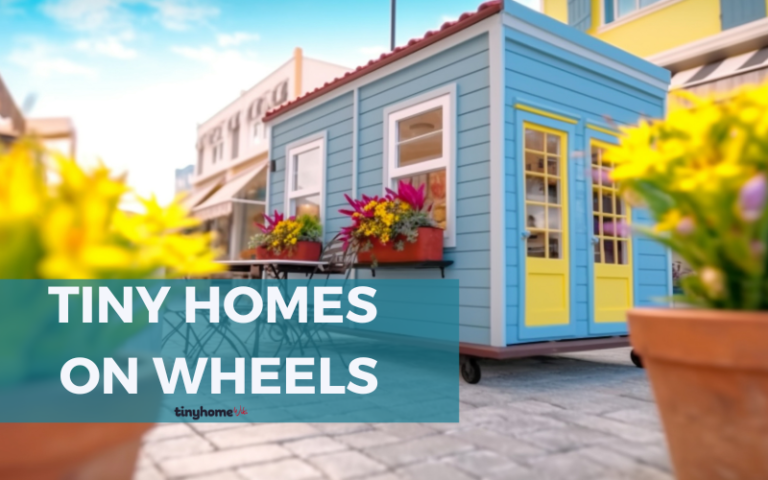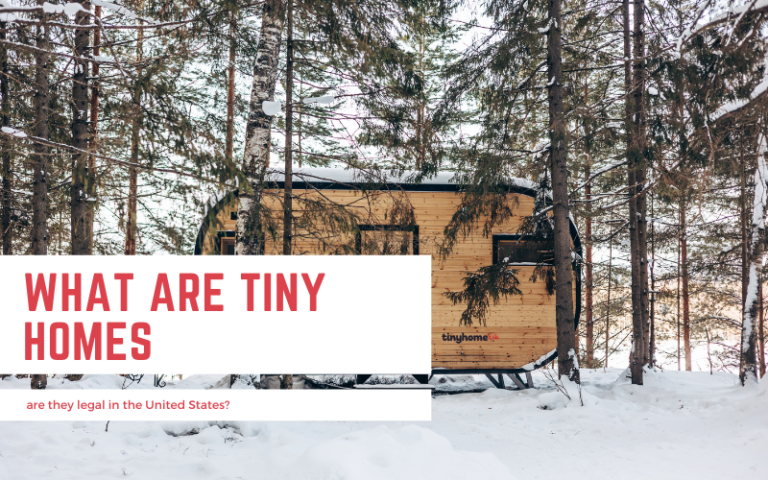Are Tiny Homes Legal in Australia? Here’s What You Need to Know.
Tiny homes have become increasingly popular in Australia as a way to downsize, reduce living expenses, and minimize environmental impact.
However, many people wonder whether these homes are legal in the country.
The answer is not straightforward, as it depends on various factors such as the location, size, and type of the tiny home.
According to the Australian Tiny House Association, there are minimum requirements for designing and constructing tiny houses on wheels and skids to ensure safe and structurally sound construction practices.
However, in most local governments in Australia, tiny homes on wheels fall into a legal gray area, and council planning does not always recognize them.
This means many people who want to live in tiny homes on wheels may face legal challenges and need special permits or approvals.
Despite the challenges, tiny homes are legal to occupy in most circumstances in Australia.
However, some areas have restrictions regarding whether the tiny home can be utilized permanently.
For instance, tiny homes on wheels are not considered permanent buildings and do not have to adhere to the Building Code of Australia.
Nonetheless, those who make their tiny homes permanent and on a foundation must comply with the Building Code of Australia.
Tiny Homes: An Overview
Tiny homes have become increasingly popular due to their affordability, minimalistic lifestyle, and environmental sustainability.
These homes are typically between 100 and 400 square feet and can be built on wheels or a permanent foundation.
However, the legality of tiny homes in Australia is a complex issue.
In most circumstances, tiny homes are legal to occupy in Australia.
However, some areas have restrictions regarding whether the tiny home can be utilized permanently.
It is important to note that the rules and regulations for tiny homes differ across the country, and it is essential to research the local laws before building or occupying a tiny home.
According to the Australian Tiny House Association, constructing tiny homes on wheels or skids must meet minimum requirements for safe and structurally sound construction practice.
These guidelines are outlined in the Tiny House Construction Guide and can assist in obtaining local authority approvals.
It is important to note that in some local governments in Australia, tiny homes on wheels are not recognized legally, and most council planners do not recognize them.
This can make obtaining permits or approvals for building or occupying a tiny home difficult.
Therefore, it is crucial to research the local laws and regulations before investing in a tiny home in Australia.
Legal Status of Tiny Homes in Australia
In recent years, tiny homes have become increasingly popular in Australia as a more affordable and sustainable housing option.
However, the legal status of tiny homes in Australia is still somewhat unclear, with regulations varying across different states and territories.
In most cases, tiny homes are legal to occupy in Australia, but certain areas have some restrictions.
For example, some councils may have zoning regulations that prohibit tiny homes as permanent dwellings or require them to be located on certain types of land.
Road and vehicle regulations also affect the legal status of tiny homes in Australia.
These regulations define how a tiny home on wheels is registered, size limitations for road transportation, and specifications for towing.
The ACT Road Transport Authority is responsible for these regulations.
The Tiny House Construction Guide sets out minimum requirements for designing and constructing tiny homes on wheels and skids to encourage safe and structurally sound construction practices.
This guide can be a reference for those seeking local authority approvals.
The Australian Tiny House Association has been lobbying governments to approve tiny homes as a permanent alternative to regular houses.
However, many councils have yet to introduce clear regulations for living in a tiny home on wheels.
While the legal status of tiny homes in Australia is still somewhat uncertain, they are generally considered viable housing options.
As regulations and zoning laws evolve, tiny homes will likely become more widely accepted and regulated nationwide.
State-Specific Laws
Tiny house regulations differ from state to state in Australia.
Reviewing the authorities responsible for road laws, planning, building, and local laws before building a tiny house is important.
Here is a breakdown of the regulations for each state:
Australian Capital Territory (ACT)
In ACT, tiny houses are considered caravans and must comply with the Caravan Industry Association of Australia’s standards.
The maximum size for a tiny house in ACT is 30 square meters, and it must be on wheels.
New South Wales (NSW)
In NSW, the regulations for tiny houses are not clear.
Tiny houses on wheels are considered caravans and must comply with the Caravan Industry Association of Australia’s standards.
However, tiny houses on foundations are subject to traditional houses’ planning and building regulations.
Northern Territory (NT)
In NT, tiny houses on wheels are considered caravans and must comply with the Caravan Industry Association of Australia’s standards.
Tiny houses on foundations are subject to traditional houses’ planning and building regulations.
Queensland (QLD)
In QLD, tiny houses on wheels are considered caravans and must comply with the Caravan Industry Association of Australia’s standards.
Tiny houses on foundations are subject to traditional houses’ planning and building regulations.
South Australia (SA)
In SA, tiny houses on wheels are considered caravans and must comply with the Caravan Industry Association of Australia’s standards.
Tiny houses on foundations are subject to traditional houses’ planning and building regulations.
Tasmania (TAS)
In TAS, tiny houses on wheels are considered caravans and must comply with the Caravan Industry Association of Australia’s standards.
Tiny houses on foundations are subject to traditional houses’ planning and building regulations.
Victoria (VIC)
In VIC, tiny houses on wheels are considered caravans and must comply with the Caravan Industry Association of Australia’s standards.
Tiny houses on foundations are subject to traditional houses’ planning and building regulations.
It is important to note that the regulations for tiny houses are constantly changing, and it is best to contact the relevant authority for the most up-to-date information.
Building Codes and Regulations
Australian Building Codes Board
The Australian Building Codes Board (ABCB) is responsible for developing and managing a uniform set of technical requirements for the design and construction of buildings in Australia.
The ABCB comprises representatives from the Commonwealth, state, and territory governments and industry experts.
The ABCB’s primary role is to develop and maintain the National Construction Code (NCC).
National Construction Code
The National Construction Code (NCC) is a set of technical requirements for the design and construction of buildings in Australia.
The NCC is divided into three volumes: Volume One covers the requirements for Class 2 to 9 buildings, Volume Two covers the requirements for Class 1 and 10 buildings, and Volume Three covers plumbing and drainage requirements.
Currently, there are no specific regulations relating to tiny houses in Australia.
As tiny houses are generally on wheels, the rules for caravans typically apply.
If a tiny house is built as a transportable dwelling, it is typically exempt from NCC requirements.
However, if a tiny house is intended to be a permanent dwelling, it may be subject to NCC requirements.
It is important to note that the NCC is not a legal document but rather a set of technical requirements adopted by state and territory governments.
Each state and territory has its own building regulations and requirements, which may differ from the NCC.
Therefore, checking with the relevant state or territory government before building a tiny house is important.
In summary, while there are no specific regulations for tiny houses in Australia, the NCC may apply depending on the intended use of the tiny house.
It is important to check with the relevant state or territory government before building a tiny house to ensure compliance with all applicable regulations.
Zoning Laws
Regarding tiny homes in Australia, zoning laws are crucial in determining where you can and cannot place your tiny home.
Zoning laws are regulations that determine how land can be used, what types of buildings can be constructed, and what activities are allowed in specific areas.
Zoning laws vary by state, so it is essential to consult with local authorities before building or placing your tiny home.
Residential Zones
Residential zones are areas designated for residential use, such as single-family homes, townhouses, and apartments.
In most cases, tiny homes are allowed in residential zones if they meet certain requirements, such as minimum size and setback requirements.
However, it is essential to check with local authorities to ensure compliance with local zoning laws.
Non-Residential Zones
Non-residential zones are areas designated for commercial, industrial, or other non-residential uses.
In most cases, tiny homes are not allowed in non-residential zones, as they are not considered permanent structures.
However, some local authorities may allow tiny homes in non-residential zones under certain conditions, such as a home office or temporary accommodation.
It is essential to note that zoning laws are subject to change, and staying up-to-date with any changes that may affect your tiny home is crucial.
Additionally, zoning laws vary by state and local council, so it is essential to consult with local authorities before building or placing your tiny home.
Legal Challenges and Solutions
When it comes to tiny homes in Australia, homeowners may face some legal challenges.
However, there are also solutions available to address these challenges.
One of the main challenges is that tiny homes are subject to council regulations, and these regulations can vary from council to council.
This means that homeowners may need permits and approvals before building or living in a tiny home.
Additionally, some councils may have restrictions on where tiny homes can be located, limiting homeowners’ options.
Another challenge is that tiny homes may not always meet the Building Code of Australia (BCA) requirements.
For example, the BCA has minimum ceiling height requirements that may be difficult to meet in a tiny home.
Similarly, sleeping lofts and stair access to lofts can also be challenging to design in a way that meets the BCA requirements.
Despite these challenges, solutions are available to help homeowners navigate the legal landscape of tiny homes in Australia.
One solution is to work with a builder or designer who has experience with tiny homes and can help ensure the home meets all necessary regulations and requirements.
Another solution is to obtain a building permit for the tiny home.
While this can be lengthy and expensive, it can give homeowners greater peace of mind and legal protection.
While legal challenges are associated with tiny homes in Australia, solutions are available to help homeowners overcome these challenges and enjoy the benefits of living in a tiny home.
Future of Tiny Homes in Australia
Tiny homes have gained popularity in Australia recently due to their affordability, sustainability, and flexibility.
While there are still some challenges in terms of regulations and zoning laws, the future of tiny homes in Australia looks promising.
The Australian Tiny House Association has been lobbying for regulation changes to make it easier for people to live in tiny homes long-term.
They have also developed the Tiny House Construction Guide, which sets out minimum requirements for designing and constructing tiny homes on wheels and skids.
Some local councils have already started embracing tiny homes, recognizing their potential to address the housing crisis and provide affordable housing options for low-income earners and those needing emergency housing.
In addition, the COVID-19 pandemic has highlighted the need for flexible and adaptable housing options, and tiny homes are well-suited to meet this demand.
Many Australians look for ways to downsize and simplify their lives; tiny homes offer a practical solution.
However, some challenges still need to be addressed, such as zoning laws and access to utilities.
It is important for the government to work with local councils and the tiny house community to develop clear and consistent regulations that support the growth of the tiny house movement in Australia.
Overall, the future of tiny homes in Australia looks bright, and with the right support and regulations, they have the potential to provide a sustainable and affordable housing solution for many Australians.






